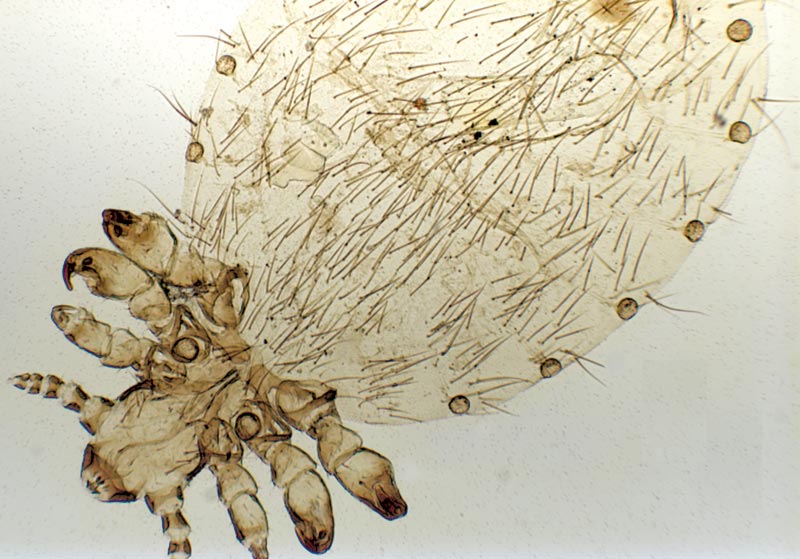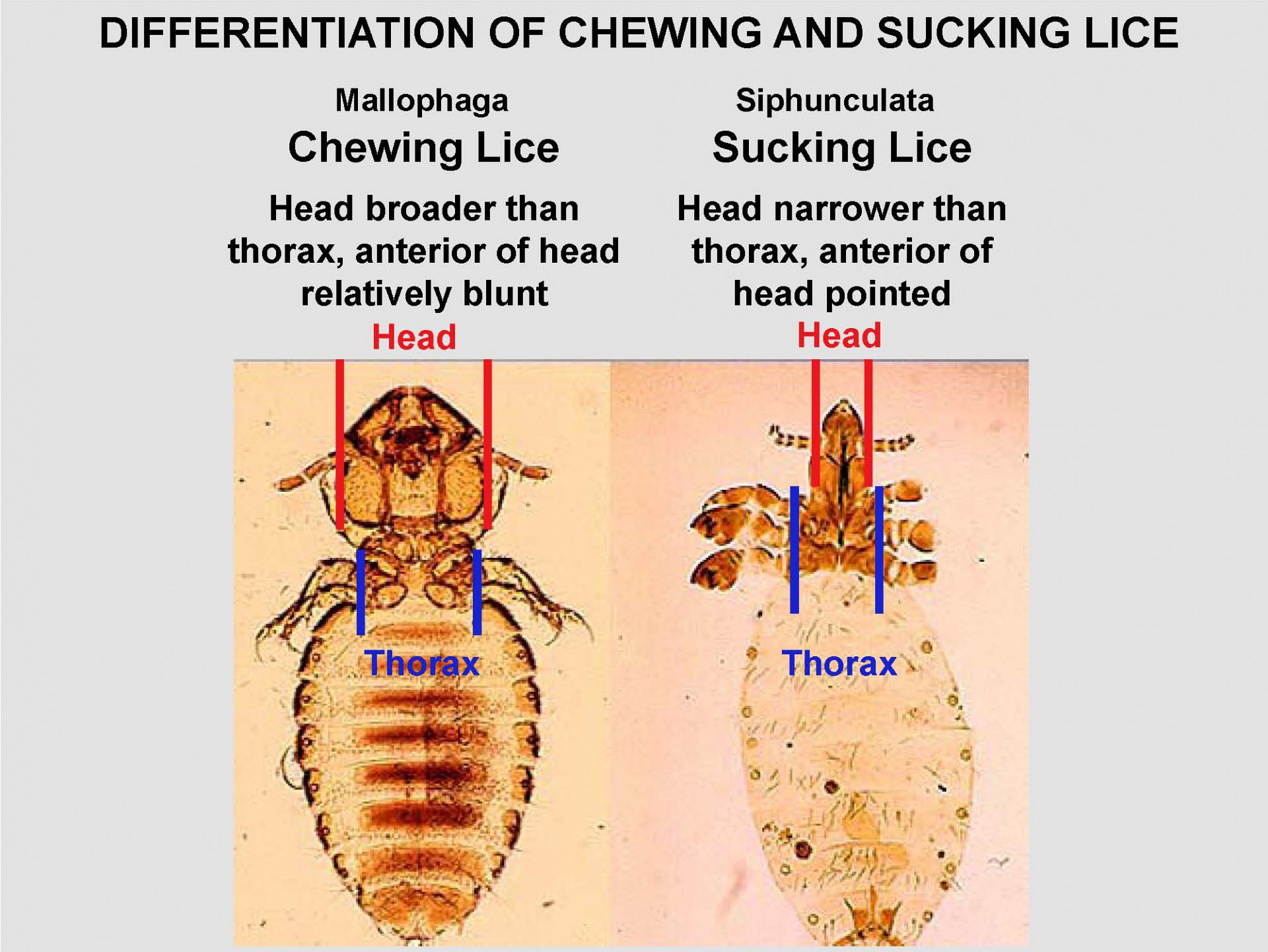ProfessionalsMembersResourcesDownloadsGuidelinesParasite ID PostersParasite Life CyclesPodcastsTherapiesTick Hosts, Habitats and PreventionFAQsScientificControlEctoparasitesEndoparasitesVector Borne DiseasesZoonosesTravelling Pets

Lice are dorso-ventrally flattened, wingless insects. They cause direct damage to the skin of affected animals and sucking lice can cause anaemia. Lice feed in one of two ways depending on the species: chewing lice feed on skin debris while sucking lice have piercing mouthparts and feed on blood.
With the exception of Linognathus setosus which is a sucking louse, all lice found on dogs and cats are chewing lice.

The two main species on dogs are:
There is only one species on cats:
Important Considerations
The dog chewing louse, Trichodectes canis, also acts as an intermediate host for the tapeworm Dipylidum caninum.
Lice are highly host-specific.

(NB. Anoplura and Siphunculata are synonyms.)
Life Cycle
The entire life is spent on the host. Adult female chewing and sucking lice lay individual eggs, called nits, and cement these to hair shafts. During her lifetime a single female may lay around 30 – 60 eggs. Nymphal stages, which are largely identical but smaller than adults, emerge from the eggs after approximately 1-2 weeks; they then go through up to five moults before reaching the adult stage, with the entire life cycle taking approximately 4-6 weeks.
Clinical signs
Heavy louse infestations are usually characterised by a poorly groomed coat and the presence of eggs or "nits" on the hair, or adult lice within the hair coat. Heavy infestation may cause eczema with crusts and alopecia. For L. setosus which is a frequent blood feeder, skin lesions such as excoriation, urticaria-like lesions and even necrotic skin lesions have been described. Louse infestations are generally highly irritating due to the wandering activities of the lice and infested animals can be restless, bad tempered and show excessive itching and rubbing.
Direct skin damage due to louse infestation is rarely serious, while it can be severe if complicated by secondary bacterial infections. For example, some cases of pyotraumatic dermatitis have been linked to louse infestation.
Severe infestation with sucking lice may result in anaemia, particularly in young puppies.
Diagnosis
Louse infestation can be diagnosed by close inspection and detection of lice or their eggs (nits) within the hair coat. Microscopic examination of adult lice from dogs allows identification of the louse species present.

Treatment of an existing infestation
Louse infestations can be treated with insecticides effective against lice. While there are a number of licensed products with efficacy claims against chewing lice, there are no European products with claims against the canine sucking louse L. setosus. This is mainly due to the difficulty of finding enough cases to meet the registration guidelines from the European agency for veterinary medicine. It is likely that a product effective against chewing lice will also be effective against sucking lice.
One treatment may be all that is necessary if the product has a persistency beyond the egg to egg development time of lice. In case of a short persistency of the insecticide, reapplication after 10 to 14 days is required to treat larvae (nymphs) hatching from the eggs (nits).
Prevention and ongoing control
Bedding and grooming equipment should be washed and the environment and any other possible contact areas checked to prevent transmission to other animals.